Photo: © Global Look Press/mfa_russia

Photo: © Global Look Press/mfa_russia
The fateful March day of 1943 was the last for the peaceful Belarusian village of Khatyn and its inhabitants. Pursuing the partisans, the Germans surrounded the village, herded the old people, women and children into the barn, locked it and set it on fire. 149 people, including 75 children, were burned alive. The youngest, Tolya Yaskevich, was only seven weeks old.
About the history of the boundless cruelty of the Nazis and about the village, which became a symbol of the terrible tragedy of the Belarusian people during the Great Patriotic War – in the material REN TV.
How the tragedy happened in Khatyn
On the lands of Belarus captured during the war, the Nazis used a ruthless tactic – the principle of collective punishment. On the morning of March 22, two platoons of the first company of the 118th Ukrainian police battalion went to restore the telephone line between the village of Pleschenitsy and Logoisk, damaged by partisans. They were led by the chief of the first company, police guard Hauptman Hans Wölke, the champion of the 1936 Berlin Olympics in shot put and Adolf Hitler’s favorite.
On the way, the police were ambushed by the Avenger partisan detachment. In the skirmish, according to a report dated April 12, 1943, the chief of the battalion, Major Erich Koerner, in addition to Wölke, three Ukrainian policemen were killed and two wounded.
Having called for help, the police first shot 26 residents of the village of Kozyri, who were gathering brushwood nearby in the forest, and then rushed to pursue the partisans. Cutthroats from the special SS battalion “Dirlewanger” who arrived from Logoisk also took part in the operation.

Soon they went to Khatyn, where the partisans made a halt. A firefight broke out, during which three partisans were killed and five were wounded. Their comrades, under the onslaught of superior enemy forces, had to leave the village.
Enraged punishers immediately burst into it. They literally sentenced to death ordinary citizens – the inhabitants of Khatyn. This village was located six kilometers from the battlefield with partisans and 54 kilometers from the capital of the republic.
“Living people rushed about in the general crowd like waves”
Punishers acted according to a long-tested scheme. Having taken Khatyn into the ring, they went home and began to drive people out into the street. There were few men, mostly children and women. Civilians were herded into a barn located not far from the house of the blacksmith Joseph Kaminsky.
The adults calmed the children as best they could, but every minute they were more and more anxious. Locked inside, they didn’t know what was going on outside. At this time, several soldiers lined the walls of the barn with straw, poured gasoline and burned matches. The wooden building caught fire instantly. Police officer Ostap Knap, who was involved in the crime, later testified:
“The people inside began to scream, cry, beg for mercy, break through the locked gates. At that moment, one of the commanders, who had already moved away from the barn and settled down at the flank of the police line, gave the command to open fire on the barn. All those standing in the chain, and I, including myself, opened fire on the people in the barn … They shot until the flaming roof of the barn collapsed and the screams and groans subsided … “

Knap admitted that he had fired at least five shots, and the screams and groans, from which “it became creepy,” did not immediately subside. Iosif Kaminsky, who was in a barn full of people, painted an even more terrible picture:
“My 15-year-old son Adam and I ended up near the wall, the dead citizens fell on me, still living people rushed about in the general crowd like waves, blood poured from the wounded and killed. The burning roof collapsed, the terrible, wild howl of people even intensified. Under it people who were burning alive were screaming and tossing and turning so that this roof was downright spinning.
Kaminsky managed to squeeze through to the door and take a few steps forward. At the blazing barn, he saw a Ukrainian punisher who was shooting at people who were trying to escape. One of the bullets hit Kaminsky in the left shoulder. He fell, pretending to be dead:
“I had a burnt back of my body and arms. I was lying completely barefoot, as I took off my burning felt boots when I crawled out of the barn … Soon I heard a signal for the departure of the punishers, and when they drove off a little, my son Adam, who was lying not far from me, about three meters away, called me to him, to pull him out of the puddle. I crawled up, lifted him up, but saw that he was cut in half by bullets. My son Adam still had time to ask: “Is mom alive?” And then he died .”
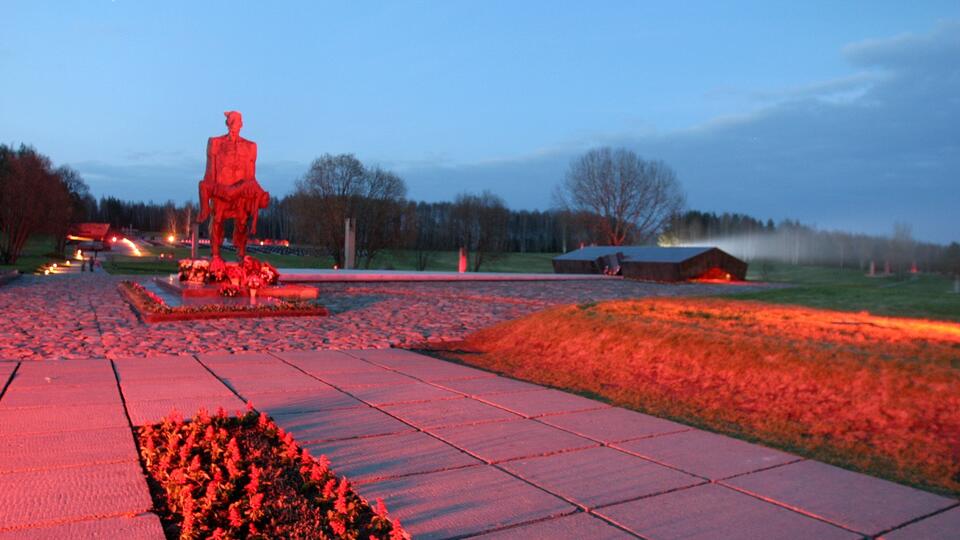
Who participated in the massacre of civilians
Together with the thugs from the SS punitive unit under the command of Oscar Dirlewanger, the 118th Ukrainian police battalion operated in Khatyn. It was formed on the basis of the paramilitary formation – the Bukovina kuren of the Organization of Ukrainian Nationalist-Melnykists (banned in the Russian Federation), created in July 1942.
In December 1942, the 118th battalion was transferred to Belarus. The main part of the battalion was located in the urban settlement of Pleschenitsy, Minsk region. Although the main task of the 118th battalion in the occupied territory of Belarus was to fight partisans, it participated in punitive operations in which civilians in villages were massacred by shooting them or burning them alive.
The massacre in Khatyn was commanded by Grigory Vasyura, a former school teacher, then a senior lieutenant of the Red Army. After Vasyura was captured, he went to serve the Germans. He rose to the position of chief of staff of the 118th police battalion.
In November-December 1986, the trial of Vasyura took place in Minsk. By the decision of the military tribunal of the Belarusian military district, he was found guilty of crimes and sentenced to capital punishment – execution.
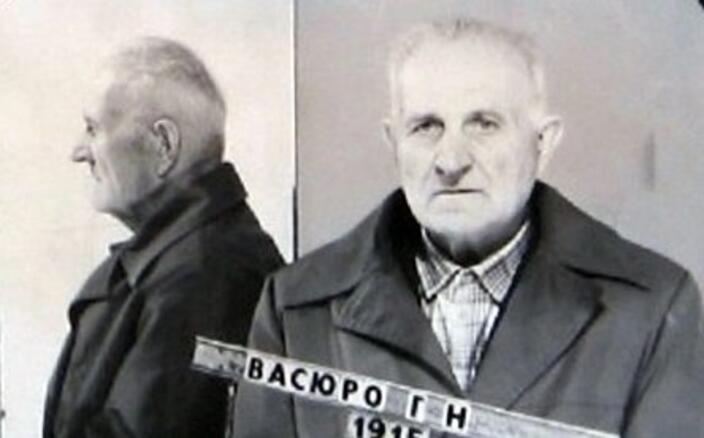
How many people died in Khatyn
149 people died from bullets and fire in Khatyn, including 75 children who were under 16 years old. The village itself was looted and completely burned.
The fate of the few survivors was terrible. So, two girls, Yulia Klimovich and Masha Fedorovich, were able to get out of the fire and crawl to the forest. There they, barely alive and burned, were found by the inhabitants of the village of Khvorosteni. But this village was also burnt by the punishers – Masha and Yulia died along with its other inhabitants.
How many residents of Khatyn were able to survive
During the terrible tragedy, six people survived. Three children – Volodya Yaskevich, Sonya Klimovich and Sasha Zhelobkovich, managed to escape from the Nazis. Two children from those who were in the barn remained alive: Vitya Zhelobkovich and Anton Baranovsky. The only adult witness to the Khatyn massacre was 56-year-old Iosif Kaminsky. All six people were recognized as witnesses to the tragedy in Khatyn.
Memorial at the site of the tragedy
Initially, it was assumed that a memorial to only the burnt Khatyn would appear at the site of the tragedy. However, then the project was revised, and Khatyn became a monument to all the villages of Belarus burned during the Great Patriotic War. There were 649 of them. More than half of them were restored after the war.
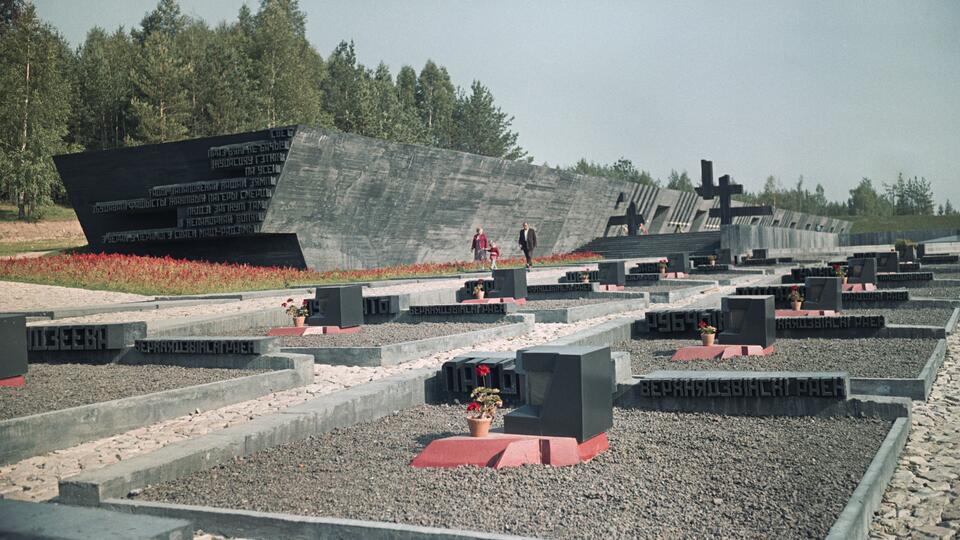
Thematically, the Khatyn memorial consists of several parts, but has a single compositional solution that repeats the layout of the former village. In the center of the complex is a bronze sculpture “Unconquered”, which is more than six meters high.
This is a symbol of a man who rose alive from the fire, carried the body of a dead boy out of there and carries it through the years, pronouncing an eternal curse on fascism, a curse on any evil on earth. This is a collective image of the Belarusian peasant. His prototype was Joseph Kaminsky, who miraculously survived.
Next to the sculpture are closed granite slabs resembling the roof of a barn in which the punishers burned the inhabitants of Khatyn. On the mass grave there is a marble wreath of memory with a symbolic appeal of the dead to the living:
“Good people, remember: we loved life and our Motherland, and you, dear ones. We burned alive in the fire. Our request to everyone: let sorrow and sadness turn into your courage and strength, so that you can forever establish peace and tranquility on Earth So that from now on, nowhere and never in a whirlwind of fires, life does not die!
On the other side of the wreath is the answer of the living to the dead:
“You are our relatives. With our heads bowed in great sorrow, we stand before you. You did not submit to the fascist murderers in the dark days of hard times. You accepted death, but the flame of love for our Soviet Motherland will never go out. The memory of you among the people is immortal, as ours is eternal The earth and the ever-bright sun above it.
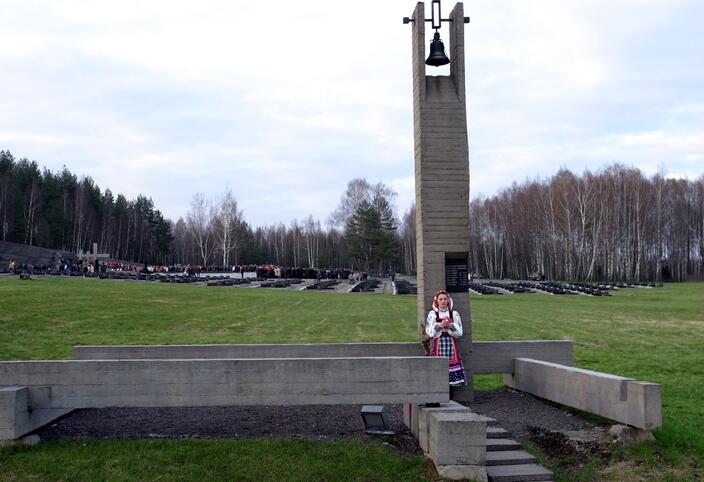
The former street of the village is lined with gray, ash-colored, reinforced concrete slabs. In those places where rural houses used to be, 26 symbolic concrete lower crowns of log cabins and the same number of obelisks resembling chimneys burned by fire were placed.
In front of each of the burned houses, as a symbol of the hospitality of the villagers, there is an open gate. On the trumpets-obelisks there are bronze tablets with the names of those who were born and lived in this house, and later died in a fiery captivity. On top of each obelisk is a Khatyn bell.
Village Cemetery, Wall of Sorrow and Tree of Life
On the territory of the complex there is the only Village Cemetery in the world – 185 symbolic graves, each of which reminds of one of the Belarusian villages burned along with the inhabitants during the Great Patriotic War, but never restored. The 186th unrevived village is Khatyn itself (the memorial was opened in 1969, and at that time this figure was known, it later changed).
Each symbolic grave of a burned village is an ashes, in the center of which there is a pedestal in the form of a tongue of flame – a symbol of the fact that the settlement was burned. Here, in a mourning urn, the earth from the village destroyed by the punishers is stored.
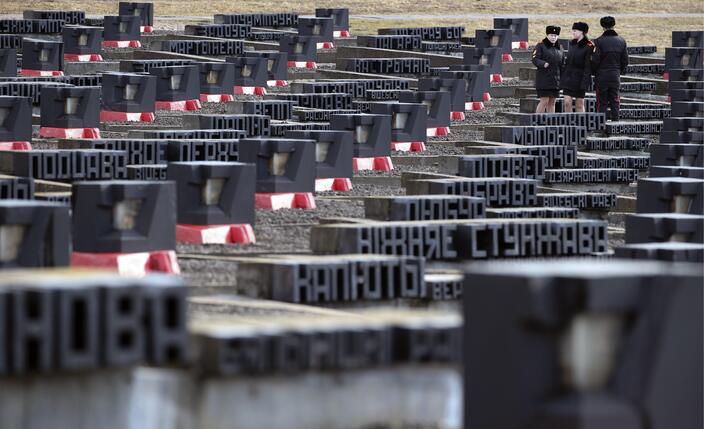
Near the Cemetery of the villages, the Wall of Sorrow is installed – a reinforced concrete block with niches in which there are memorial plates with the names of 66 largest death camps and places of mass death of people. Another memorial element of the Khatyn complex is the Tree of Life, on the branches of which the names of 433 Belarusian villages are listed in alphabetical order, burned by the invaders along with the inhabitants, but restored after the war. In memory of all the inhabitants of Belarus who died during the war, the Eternal Flame burns.
“Screaming about it”
The fate of Khatyn during the Great Patriotic War, according to the latest data, was repeated by at least 216 settlements on the territory of the Byelorussian SSR. All of them were destroyed and not revived.
The memory of them remained in the book “I am from a fiery village …” – this is a documentary collection of memoirs about the destruction of Belarusian villages by the Nazis and about partisans during the war, collected and compiled by writers Ales Adamovich, Vladimir Kolesnik and Yanka Bryl:
“Belarusian Khatyns are the reality, the practice that fascism prepared for entire countries and continents, but only here managed to start on a large scale. The Soviet people paid with huge sacrifices so that the world, other nations would not experience the same, would not know hundreds and thousands of Khatyns. He paid with his Khatyns. Those who come here, come to Khatyn, must understand this, know this. The sharp, dark figure of an old man with such a stone and such a soft body of a dead boy in his arms silently screams about this, the names of former villages in the terrible Cemetery scream about this. villages – the only one on Earth”.
Source: Ren
Alfred Hart is an accomplished journalist known for his expert analysis and commentary on global affairs. He currently works as a writer at 24 news breaker, where he provides readers with in-depth coverage of the most pressing issues affecting the world today. With a keen insight and a deep understanding of international politics and economics, Alfred’s writing is a must-read for anyone seeking a deeper understanding of the world we live in.
